Petri FTII 35mm review and repair
This is a review/description of the Petri FTII 35 mm camera, which was made in about 1971 by Petri in Japan.
Petri FTII Images
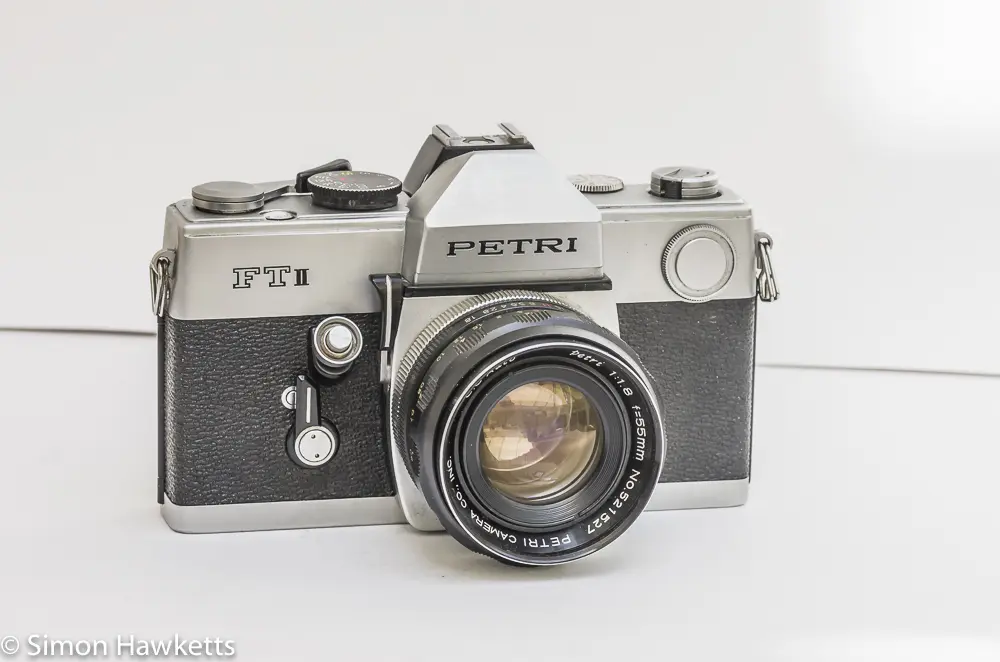


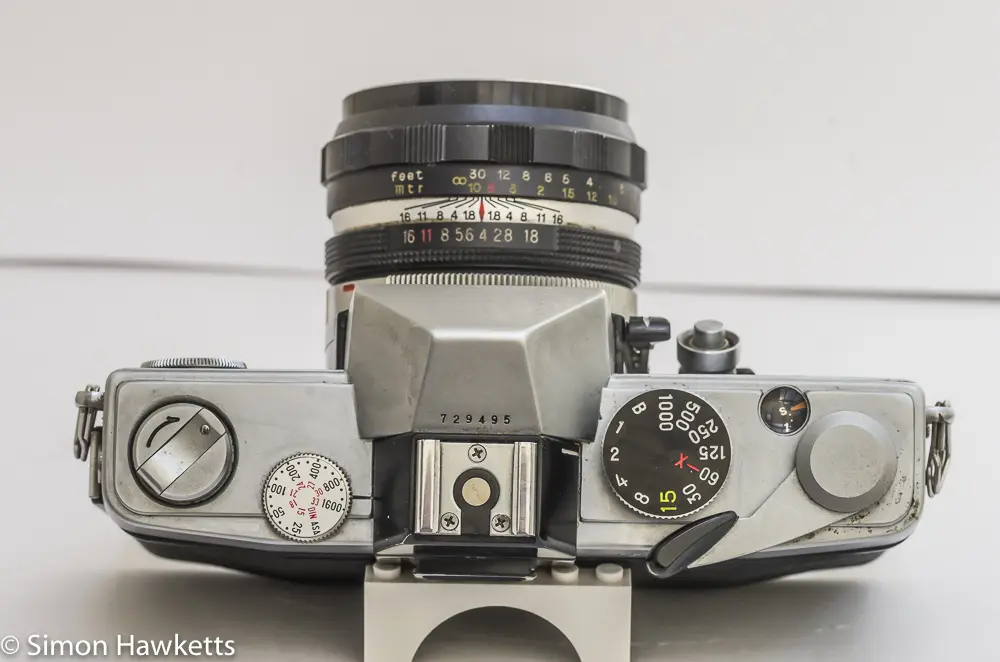



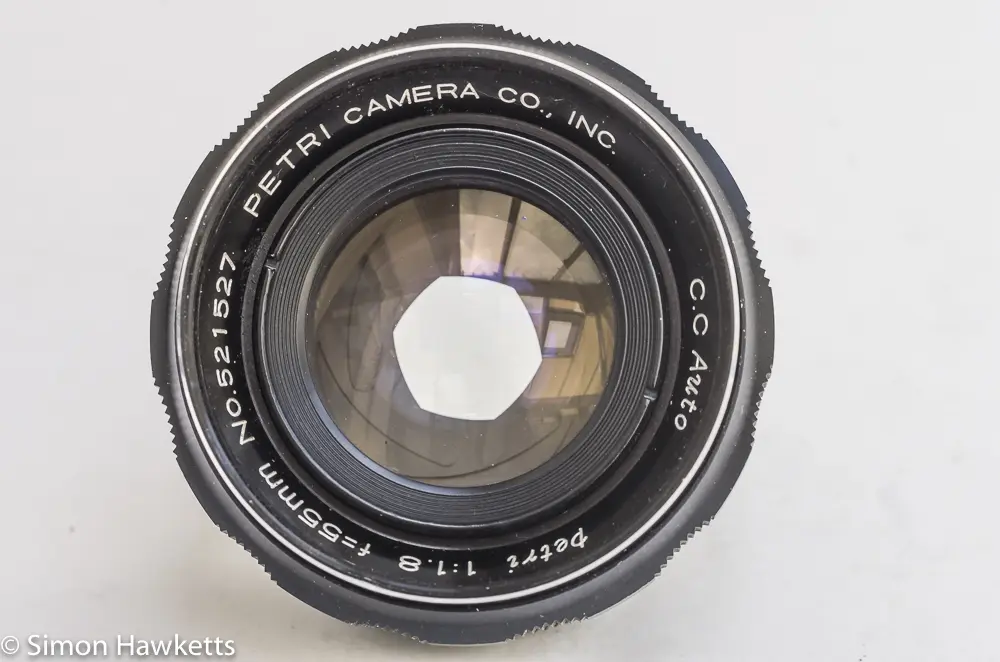


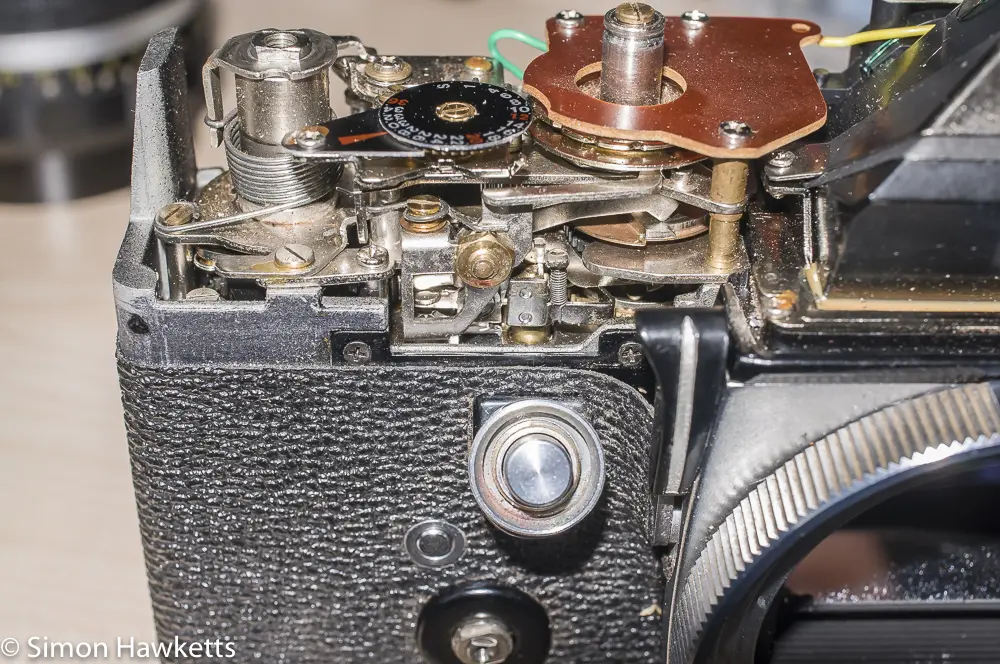





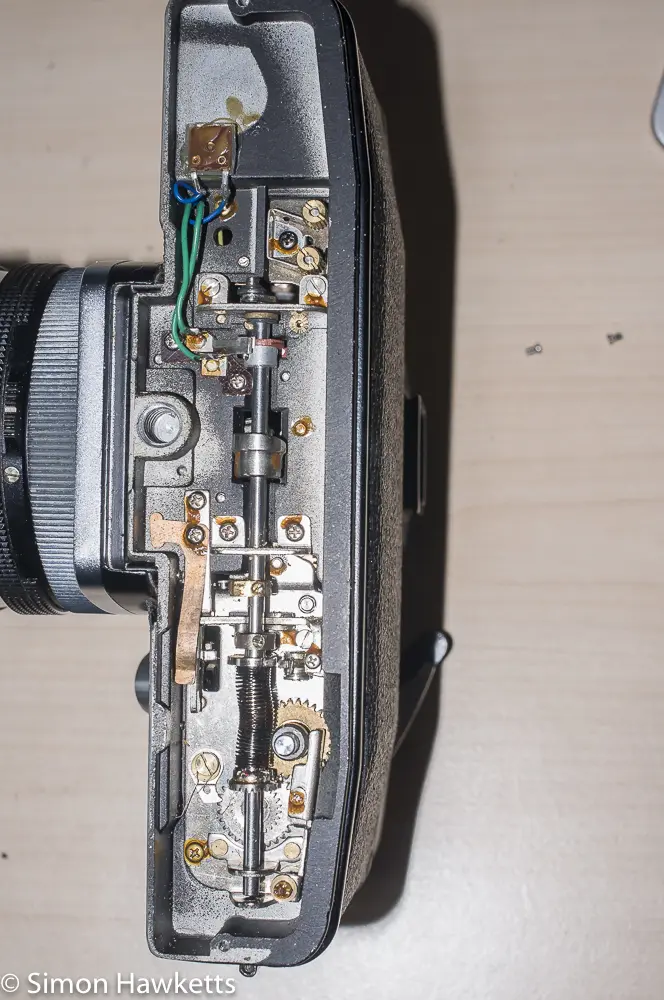

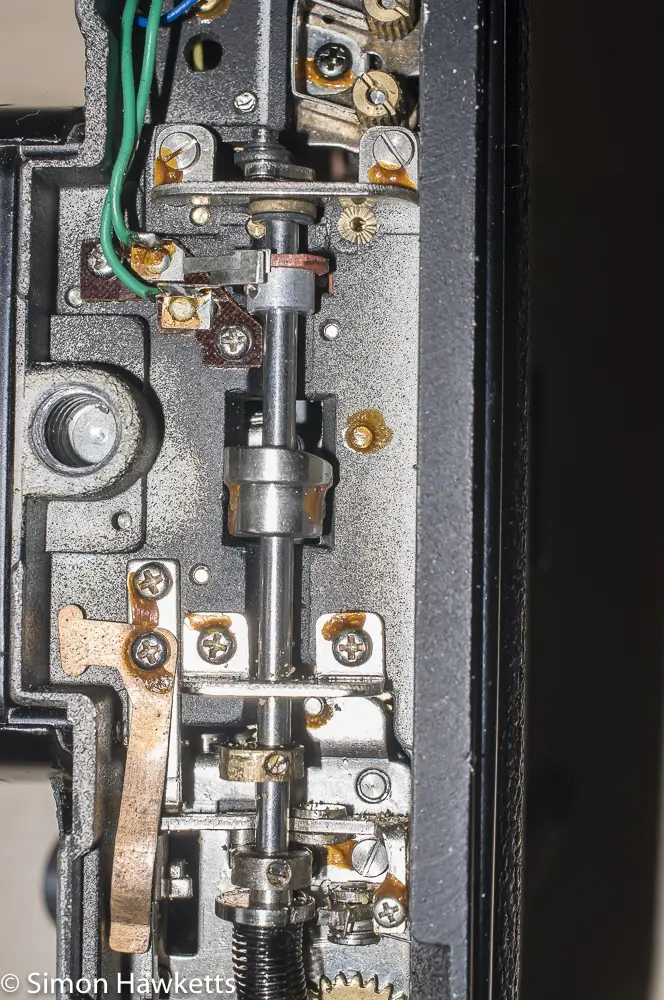

My Petri FTII Camera
I bought this camera for £1.30 because it was sold as faulty and I wanted to see if I could fix it.
When I received the camera, the problem was that the film advance was locked and the shutter wouldn’t fire. These sorts of problems are generally because the camera mechanism has managed to get caught at some point in mid-cycle.
By that I mean it hasn’t completed the full set of events which run from cocking the shutter to completing the firing of the shutter – it’s as if the camera is frozen in time with the shutter either still cocked or just fired. I therefore started to have a look at how the mechanism works on the Petri.
I first removed the bottom cover to see if I could find where the jam was occurring. There didn’t seem to be anything obvious, and I found if I manually turned the long bar which controls the shutter and mirror on the Petri, I could get the mirror return spring tensioned and flip the mirror when I simulated pressing the shutter by pulling on the bar the shutter release acts on. So I turned my attention to the top of the camera and removed the top plate.
After a bit of poking about with some of the cogs under the shutter speed adjustment, I got the camera to release the shutter and discovered that the reason it was locked was because the slow speed escapement had been stuck, and therefore the shutter couldn’t be cocked. I suspect that the camera had lain unused for years, and then someone had tried to fire it with a slow speed selected. The build up of dust and old grease held the cogs in the slow speed escapement from turning, and so the camera was jammed.
Once the slow speed movement had completed its run down, I could wind the film advance again and re-try the shutter, although it needed help again if it was set to any of the slower speeds. I found a small drop of IPA in a dropper, which I managed to get to just the right point in the slow speed escapement, freed up the mechanism, and it all started working again. It might be that I’ll need to actually strip it down and clean it properly, but at the moment it all seems to be working well at all speeds.
Once the camera was fixed and running properly again, and following a good clean, it’s become a useful addition to my collection, being a younger cousin to one of my first ever cameras – a Petri MF-1. I will have to replace the light seals if I decide to run a film through it, however.
Petri FTII Description
Petri is one of those camera manufacturers that have now disappeared, but were in their day quite a reasonable player in the camera market. Their camerapedia page suggests they produced a range of cameras covering many different formats over many years from the mid 1930s to the mid 1970s when the company went bankrupt.
The FTII is a fairly standard early 1970s model with stop down metering, a self-timer, shutter speeds of 1 sec to 1/1000 and a fast 55 mm f/1.8 auto diaphragm lens.
The lens mount is a Petri breech lock design, where the lens fits on the body and a ring is turned to lock the lens to the camera. This seems to work well and is quick to operate to change lenses, but on one occasion as I was trying out the camera I managed to turn the lock ring rather than the aperture ring and nearly dropped the lens!
By the time the later models were brought out the mount had changed to M42 and then later to Pentax K mount, although by that time I think the cameras were actually made by Cosina for Petri. The change to a more standard lens mount was, I guess, due to the costs associated with producing your own lenses in a range big enough to tempt photographers to buy into it.
The lens itself has a coating and the 6 blade aperture is of stepless design. Because of the breech lock mount, it is difficult to test how well it performs on a digital camera, so I may run a film through the camera to see how it performs with film.
It was common when this camera was made to combine the shutter speed dial with the ISO adjustment dial, but Petri took a different approach and made the ISO a separate dial on the top plate of the camera. The battery compartment is also in an unconventional place, on the front panel rather than the common bottom plate position.
All in all this is an interesting if unspectacular camera.
Petri FTII Camera Manual
I’ve started a new section of the site to feature the camera manuals for some of the vintage cameras in my collection. The manual for this camera is embedded below, and there is also a copy in the linked online resource included in the spec list.
Petri FTII specification
- Petri FTII 35mm slr camera made by Petri in Japan in about 1971
- Stop down TTL metering
- Horizontal cloth focal plane shutter 1sec to 1/1000 sec +B
- Flash sync at 1/60sec
- Front mounted shutter release
- Self timer approx 10sec
- Single mercury cell (no longer available)
- Fully mechanical camera – battery only for metering
- Petri breech lock lens mount
- 55mm f/1.8 – f/16 auto diaphragm lens
- Auto reset frame counter
- Body Ser No:729495
- Lens Ser No: 521527
- Manual available on-line here.
Discover more from Everything Vintage
Subscribe to get the latest posts sent to your email.

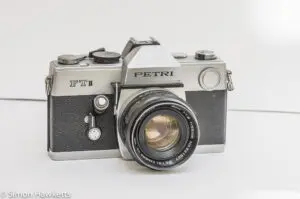



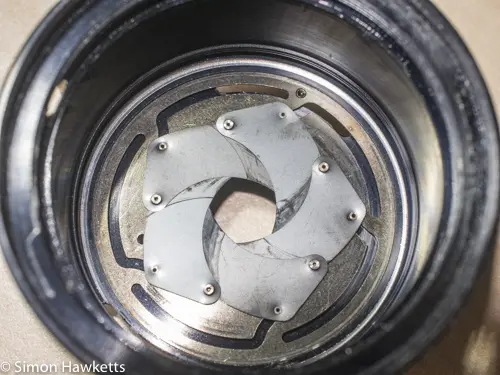

I have a petri ttl, the lightmetet doesnt work. There is some corosion inside the battery compartment. Is this easy to fix?
Greatly enjoyed this article. I had a Petri FTII purchased in 1971 at the Air Force Base Exchange Clark Field Philippines. Also bought a Petri rangefinder camera. They were my first full frame cameras and got me hooked on photography.
Good article, thanks! I think Petri cameras are good. Good design and they are special in terms of their mechanics. Unfortunetly, they says about them: not reliable cameras.
I have some Petri cameras, for example: FT EE (black – electronics/lightmeter are working), PetriFlex V3 with light meter (working) and with some factory accessories and ect…
But My all time favorite PetriFlex 7, it’s an impressive camera (fully working, but not tested with film – I will test it with a roll of 35mm film soon).
However, the problem with my some Petri cameras is that the second curtain does not return fully to position after the exposure and the mirror is stuck in top position. I need to help the curtain return to it’s position.
My question is: Is it possible to repair the camera? How? Where it the problem?